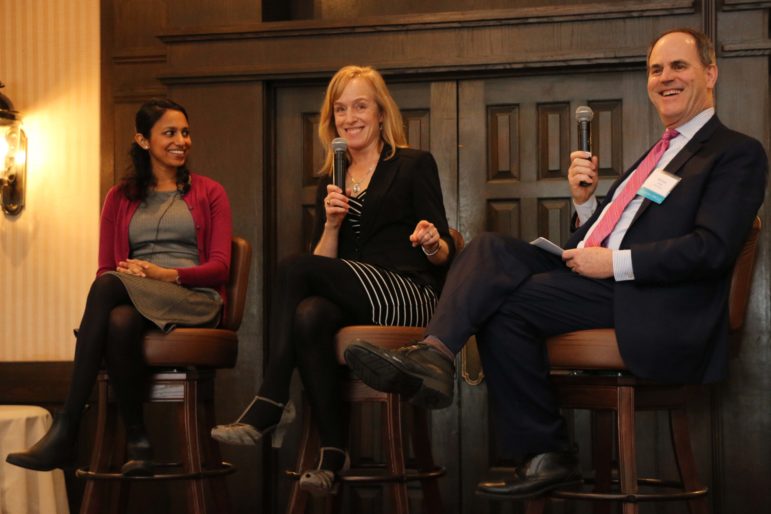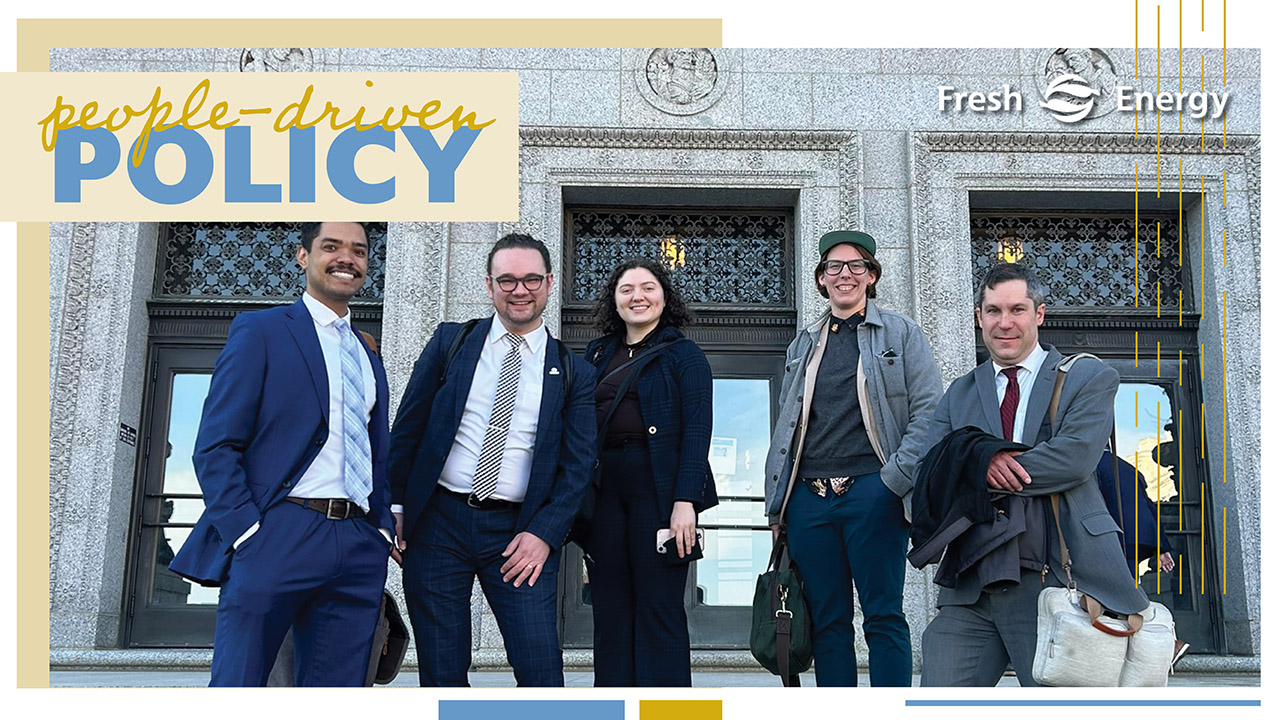
Carbon-free electricity is powering more of our economy and all Minnesotans deserve to benefit. Currently, however, low- and moderate-income households may not have access to cost-saving clean energy opportunities. Fresh Energy prides itself on crafting smart energy policies that harness the power of the marketplace to speed the transition to clean energy. But how can we ensure that no one is left behind?
With the rise of impact investing it is clear that the finance and investment community can play a significant role. On January 30, Fresh Energy brought together more than 120 finance, energy, and government leaders—with thousands more watching from home—to explore this issue and discuss the critical role for private investment in ensuring clean energy for all. The event, titled Energizing Impact, was part of Fresh Energy’s popular Power Pairings series.
The Energizing Impact Power Pairing event featured two leaders with unique perspectives: Susan Hammel, an impact investment expert currently serving as the executive in residence at the Minnesota Council on Foundations, and Sandhya Murali, who is putting dollars to work increasing access to community solar as a co-founder of Solstice in Massachusetts.
An energy entrepreneur, Sandhya Murali highlighted how community solar can make it possible for everyone to be able to enjoy the benefits of solar. She explained that roughly 90 million households—about 77 percent of the U.S. population—can’t access the residential solar market because they live in a condo, don’t own their home, have a shady roof, or don’t have the financial ability to lease or buy a system. Community solar enables all utility customers to be able to tap into clean energy.
However, a high credit score requirement for participation has created barriers to community solar for low- and moderate-income households. Solstice is developing the EnergyScore qualifying metric, based on utility bill performance, housing, financial, and demographic characteristics, as an alternative to the FICO credit requirement. The next phase is to test this metric out on a series of pilot programs. That’s where impact investment can come in by making it financially possible to test and de-risk the EnergyScore to the to the market.
Sandhya is just one example of an entrepreneur with an amazing idea to bring solar for all but who lacks the financial capital to make it happen. In the past, these types of projects relied heavily on philanthropic capital—where there is no expectation of any financial return—to get started.
Impact investment expert Susan Hammel told the crowd that if we want to dramatically change the energy market to clean energy, we can’t only do it with philanthropic capital through grantmaking (which constitutes only 5 percent of foundation assets). We need to tap into the 95 percent of foundation assets that are invested for fiduciary returns. The good news, according to Susan, is we can now have it all—impact investments that pass a fiduciary test, meet social and environmental impact, and ensure clean energy for all. And Minnesota has the capital to make it a reality, with over 18.6 billion dollars in foundation capital alone. She laid out several steps investors can take.
At the end of her talk, Susan called on everyone to use “Minnesota Nice” to be the Bold North and lead on impact investment in the country. Fresh Energy couldn’t agree more.
Thank you to all who made this event a success. Stay tuned for updates on our progress toward an ensuring clean energy for all.
For a full recording of the event, watch below.
Sandhya Murali and Susan Hammel discuss how private investment can spur clean energy for all for our Energizing Impact event
Posted by Fresh Energy on Tuesday, January 30, 2018

